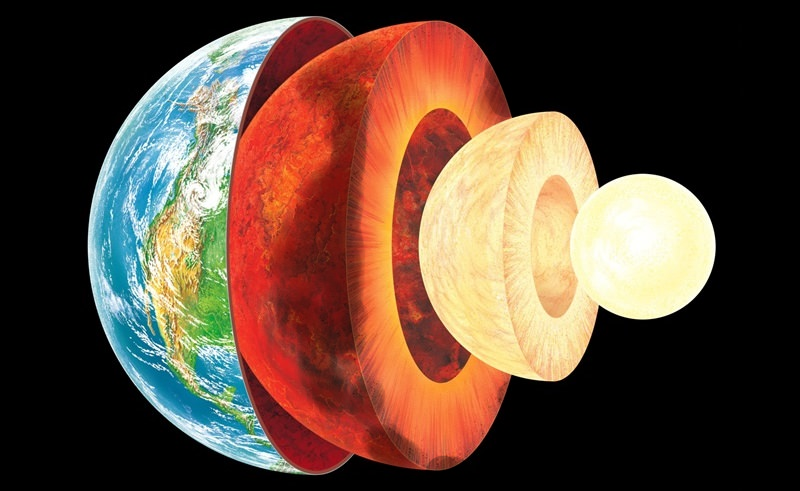A New Perspective on the Effects of Earth’s Tides, Divided into Atmospheric Tides, Oceanic Tides, and Magmatic Tides.
by Michael Klejna, still in progress

Table of Contents
1. Atmospheric Tides
Atmospheric tides have the least force for two main reasons. Firstly, air has the lowest density compared to other substances, and secondly, the atmosphere is open towards the upper regions. Therefore, situations where accumulated energy forcefully impacts a small area do not occur; the air can always escape upwards. Consequently, continents only partially limit atmospheric tides, giving rise to wind systems in the form of global bands. These global bands can also be observed on other planets with moons or tides.
2. Oceanic Tides
In contrast, oceans are situated in basins or pools. Continents surround the oceans, limiting the expression of their tidal energy, while absorbing part of it.
Tides occur equatorially between the tropics, primarily driving ocean currents. The effects of global wind systems and the Coriolis force are overstated in this context.
The pools of the Pacific and Atlantic open north and south towards the Arctic Ocean and the Southern Ocean. The Indian Ocean only opens to the south. The Arctic Ocean and the Southern Ocean do not have their own driving force since tidal effects are minimal in these regions. However, they serve as compensatory basins for the Pacific, Atlantic, and Indian Oceans. When the tide raises the water level in one of the three equatorial oceans, water flows from these compensatory basins. During low tide, excess water flows back into these basins. The Arctic Ocean and the Southern Ocean only have passive currents resulting from their function as compensatory basins.
3. Magmatic Tides
The energies of magmatic tides, like oceanic tides, are constrained by continents, but from the undersides of continents. Everything behaves in reverse here. The pools of magmatic oceans are sharply bounded by the Earth’s core, which, due to its higher density, offers no escape route. Also, the magmatic tidal wave does not travel on the “surface of the pools” but at their “bottom,” directly beneath the continents. Since the continents, here (unlike the upper sides of the continents), have the lowest density, they form the potential for balancing the magmatic tidal wave in the magmatic oceans. The energy of the magmatic tidal wave manifests through continental drift and the destruction of the underside of continental plates between the tropics. Due to the lack of balancing potential and the highest density compared to other tides, magmatic tides have the highest localized force, shaping the underside of continents in a different manner than oceanic tides on the upper side of continents, which they shape.
For further reading on the tidal-induced formation of continents, see: “Continental Drift, Plate Tectonics, Proto-continents, South Atlantic Magnetic Anomaly, etc.: The Formation History of Continents Based on the Influence of the Gravitational Ramp.”




